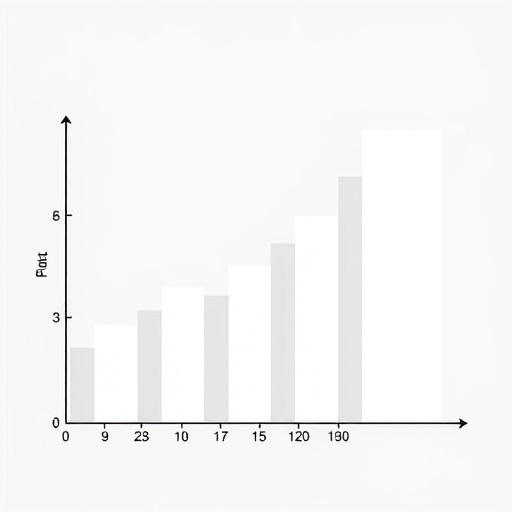In the intricate landscape of decision-making, humans constantly grapple with uncertainty not only about the outcomes of their choices but also about how confident they are in their own estimations. A groundbreaking study published in Nature Communications by Aberg, Antle, and Paz reveals how estimation uncertainty profoundly shapes decision-making behaviors—both in contexts that allow for learning and those in which learning opportunities are absent. This work not only advances our fundamental understanding of cognitive processes underpinning decisions but also challenges long-held assumptions that uncertainty’s influence dwindles without feedback or learning mechanisms.
Estimation uncertainty can be understood as a metacognitive variable. It captures the agent’s self-assessed reliability concerning their knowledge or predictions. Unlike expected uncertainty, which reflects known variability in outcomes, or unexpected uncertainty arising from sudden environmental changes demanding cognitive adjustments, estimation uncertainty is subjective and internal. Prior to this work, how this internal uncertainty influences decisions—especially when the environment does not allow for learning—remained enigmatic.
.adsslot_W2HzdoLGk7{ width:728px !important; height:90px !important; }
@media (max-width:1199px) { .adsslot_W2HzdoLGk7{ width:468px !important; height:60px !important; } }
@media (max-width:767px) { .adsslot_W2HzdoLGk7{ width:320px !important; height:50px !important; } }
ADVERTISEMENT
The researchers harnessed rigorous experimental paradigms combined with sophisticated computational modeling to dissect how estimation uncertainty modulates human decision-making. Their approach departed from classical decision tasks by carefully designing conditions both with and without learning opportunities. This allowed them to isolate the distinct impact of estimation uncertainty independent of feedback-driven learning effects. The novelty of their design lies in controlling for variables that typically co-vary with uncertainty during learning, enabling a clearer view of the estimation uncertainty’s role.
Intriguingly, their data demonstrated that estimation uncertainty robustly affects decision policies. Even when no new information can be learned from the environment—thus there is no opportunity to update beliefs—participants’ choices exhibited systematic modulations according to their degree of confidence. Essentially, when people were less certain about their own estimates, their decisions reflected increased caution or reliance on alternative strategies, such as risk-avoidance or default preferences.
The findings align with but significantly extend previous theoretical frameworks incorporating uncertainty in decision-making. Whereas much focus has been placed on how outcome uncertainty alters learning rates or exploration, this work reveals that internal confidence itself is a driving force, shaping actions even when the external world remains static. This challenges models that neglect the agent’s internal belief distributions and urges integration of self-assessed estimation uncertainty into predictive frameworks.
From a neurocognitive perspective, the study’s implications are profound. Estimation uncertainty is thought to engage metacognitive circuits involving prefrontal and cingulate regions, which monitor and regulate cognitive processes. By demonstrating behavioral consequences of this internal uncertainty signal, the work invites further neuroscientific investigation into how these brain areas orchestrate decision strategies under varying confidence landscapes. Future neuroimaging and electrophysiological research may elucidate the neural coding and dynamics transforming estimation uncertainty into adaptive or maladaptive decision policies.
Beyond theoretical insights, these discoveries have wide-ranging practical applications. Many real-world decisions occur in environments with limited or no immediate feedback—financial investment, medical diagnostics, or high-stakes operational choices being prime examples. Understanding how internal estimation uncertainty influences such decisions can inform the design of decision aids, training programs, or artificial intelligence systems that better mimic human reasoning under ambiguity. For instance, systems might dynamically adapt suggestions based on inferred user confidence to optimize outcomes or reduce cognitive load.
Technically, the research leveraged Bayesian computational models to formalize how estimation uncertainty modulates choice probabilities. Bayesian approaches elegantly capture belief distributions and confidence, offering a mathematically principled framework. By fitting these models to behavioral data, the authors quantitatively dissected participants’ latent estimations, separating learning-related uncertainty from subjective estimation uncertainty. This computational rigor ensures robustness and mechanistic interpretability of the findings, setting a standard for future cognitive research on uncertainty.
The experiments involved controlled decision-making tasks where participants repeatedly chose between options with probabilistic outcomes. By manipulating the availability of feedback and thus the opportunity to learn from outcomes, the paradigm isolated the influence of estimation uncertainty. Statistical analyses confirmed that even in no-feedback conditions, choice patterns correlated significantly with inferred estimation uncertainty metrics. This dissociation from learning effects demonstrates a fundamental attribute of cognitive architecture: internal uncertainty modulation is ubiquitous and potent.
Furthermore, the study observed consistent individual differences in sensitivity to estimation uncertainty. Some participants exhibited pronounced behavioral shifts in response to lowered confidence, while others remained relatively stable. These differences may reflect variability in metacognitive competence or personality traits such as risk preference and cognitive flexibility. Exploring these individual patterns could yield personalized approaches to improve decision-making or tailor educational interventions addressing uncertainty awareness.
The implications for artificial intelligence and machine learning are also noteworthy. Most decision-making algorithms hinge on quantifiable uncertainty, often grounded in external data variability. Incorporating an estimation uncertainty analog into AI systems—that is, a form of self-confidence or reliability assessment—could enhance adaptive behavior. Such agents might better gauge when to explore or exploit, mitigate overconfidence biases, or simulate human-like caution, thereby crossing a threshold from purely data-driven to introspection-informed artificial cognition.
In sum, the work of Aberg and colleagues uncovers a pervasive and previously underappreciated influence of estimation uncertainty in shaping human choices. By demonstrating its impact beyond learning-enabled scenarios, they reframe uncertainty as not only an environmental feature but also an internally generated cognitive state essential to adaptive behavior. This insight bridges gaps across psychology, neuroscience, economics, and computational modeling, inspiring fresh interdisciplinary dialogues and pioneering new research trajectories.
As we rethink how uncertainty shapes cognition, the study invites a paradigm shift: embracing the agent’s self-assessment capability as a fundamental ingredient of decision processes. Future endeavors building on this foundation stand to unravel the complexities of confidence, learning, and choice, ultimately illuminating the very essence of human rationality amid ambiguity.
Subject of Research: Estimation uncertainty and its effect on human decision-making in contexts both with and without learning opportunities.
Article Title: Estimation-uncertainty affects decisions with and without learning opportunities.
Article References:
Aberg, K.C., Antle, L. & Paz, R. Estimation-uncertainty affects decisions with and without learning opportunities. Nat Commun 16, 6706 (2025). https://doi.org/10.1038/s41467-025-61960-2
Image Credits: AI Generated
Tags: Aberg Antle and Paz study findingschallenges in cognitive models of decision-makingcognitive processes in decision-makingconfidence in estimations and predictionsdecision-making under uncertaintyestimation uncertainty in decision-makinghuman behavior in uncertain environmentsimpact of feedback on decision-makingmetacognitive variables in choicesNature Communications research on decision-makingreinforcement learning and uncertaintystrategic planning under uncertainty






